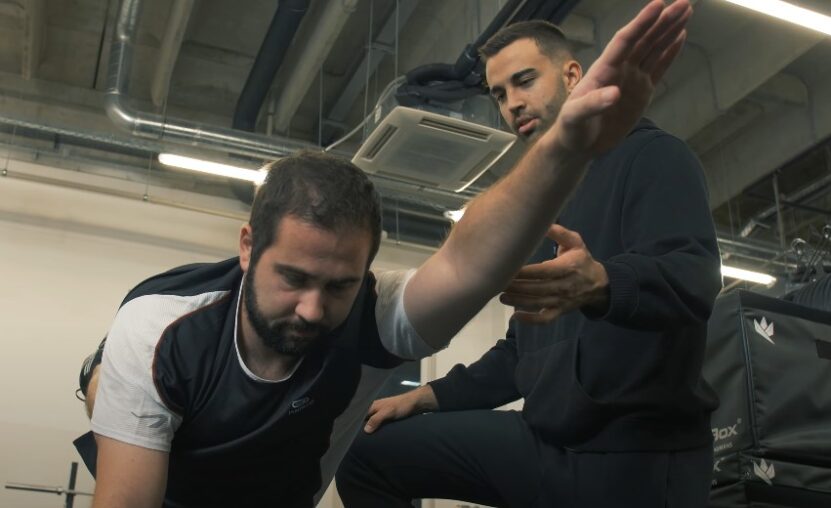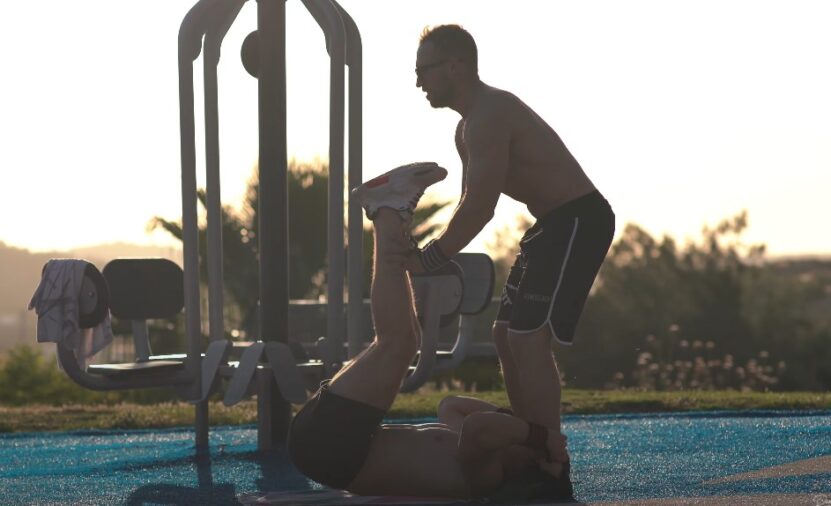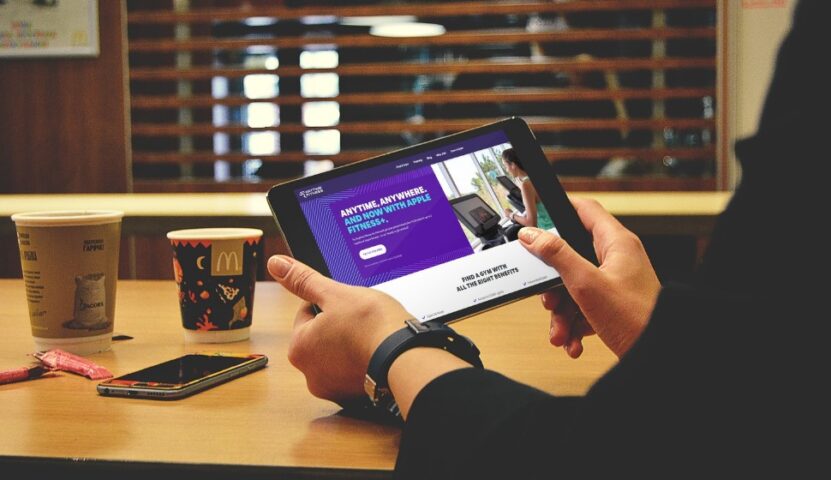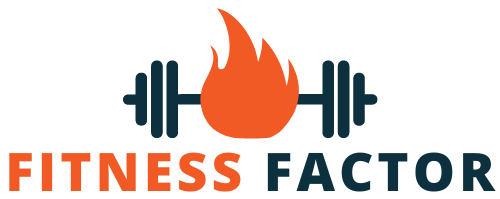The fitness industry is booming. With more people focusing on health and wellness than ever, now’s the perfect time to jump in. But let’s be honest: finding your first job as a personal trainer can feel a little intimidating, especially if you’re starting with zero experience. Don’t worry—you’re not alone in this. I’ve been in your shoes, and I know the path to success.
In this guide, we’ll walk through the steps to help you get hired as a personal trainer in 2024. I’ll cover everything you need to know to kickstart your fitness career.
Step 1 – Choose Your Ideal Work Environment

Personal trainers work in a wide variety of settings, and each environment has its own advantages. You don’t have to limit yourself to traditional gyms. Explore all the options available to find what suits your personality and career goals.
Type of Fitness Environment
Description
Pros
Cons
Large Gyms
Chains like LA Fitness or Equinox offering exposure and foot traffic.
Broad client range, high visibility.
Highly competitive, requires effort to stand out.
Boutique Fitness Studios
Smaller studios focusing on specialized training such as yoga, Pilates, or HIIT.
Intimate setting, specific training niche.
Limited client base, less variety in services.
Senior Living Centers
Centers that hire trainers to help older adults with strength, balance, and mobility.
Rewarding work with a specific age group.
May require specialized training or certifications.
Resorts/Spas
High-end locations offering fitness services to vacationers.
Luxurious environment, combines fitness with hospitality.
Potentially less stable employment, niche market.
Community Centers
Local centers offering fitness classes and personal training programs.
Connects with local residents, supportive environment.
May offer fewer opportunities for advanced training.
Apartment Complexes
Fitness centers within apartment buildings that sometimes offer personal training services.
Convenient for residents, close to home.
Limited client base, may not offer extensive facilities.
Dance and Exercise Studios
Studios specializing in dance fitness or group exercises like Zumba or barre.
Perfect for those passionate about dance or group classes.
Niche focus may limit client variety, less traditional fitness.
Take time to explore these options and think about where you’ll thrive the most.
Step 2 – Find Your Specialty

One of the best ways to stand out as a trainer is by specializing in a particular area of fitness. Instead of being a generalist, narrowing your focus helps you build a reputation as an expert in your niche.
- Bodybuilding – If you’re passionate about muscle building and physique development, specializing in bodybuilding could be your path. This involves working with clients who want to increase their muscle mass, strength, and overall body composition.
- Weight Loss – Helping clients lose weight and adopt a healthier lifestyle is a hugely in-demand specialty. Many people join gyms specifically to lose weight, and as a trainer, you can provide the guidance and support they need to reach their goals.
- Senior Fitness – With the aging population growing, there’s a rising need for trainers who specialize in working with older adults. This involves creating safe, low-impact workout plans that focus on maintaining mobility, balance, and strength.
- Athletic Training – If you love sports, consider focusing on athletic training. You’ll work with athletes to improve their performance, prevent injuries, and recover from them.
Some specialties require additional certifications, but they can significantly boost your credibility and help you attract clients who are specifically looking for that expertise.
Step 3- Get Certified as a Personal Trainer
You’ve probably guessed by now that certification is crucial. In fact, most gyms won’t even consider hiring you without it. Getting certified shows that you’ve mastered the essential knowledge and skills needed to safely train clients.
If you’re exploring various certification options, it’s also worth checking out the certifications offered by the ASFA. They provide a wide range of programs tailored to different specialties, which can help you stand out in a competitive market.
In addition to personal training certification, many gyms require CPR and AED (Automated External Defibrillator) certifications. Being able to respond in an emergency is vital, especially in environments where physical exertion is high.
Step 4 – Start Building Your Resume

Once you’re certified, it’s time to put together your resume. But what if you don’t have much experience? That’s okay—everyone starts somewhere.
What to Include on Your Fitness Trainer Resume
- Certifications – Make sure your certifications are listed prominently. Include when and where you received them.
- Freelance or Volunteer Work – If you’ve helped friends, family, or coworkers reach fitness goals, include that on your resume. Experience is experience, even if it wasn’t in an official capacity.
- Soft Skills – Don’t forget to highlight your soft skills like communication, patience, and motivation. These are just as important as your technical training skills.
- Relevant Achievements – If you’ve completed any fitness challenges or have any personal milestones that show your commitment to fitness, add them to your resume.
You don’t need years of formal experience to show that you’re dedicated and qualified. A well-crafted resume will help you stand out from other entry-level applicants.
Step 5 – Attend Workshops and Networking Events

One of the best things you can do for your career is to get involved in the fitness community. Attending workshops, seminars, and networking events allows you to meet other trainers, gym owners, and industry experts. Not only does this help you stay up-to-date with the latest trends and techniques, but it also opens doors for new opportunities.
Look for events in your area, or consider attending virtual ones if that’s more convenient. I’ve found that people in the fitness industry are generally very supportive of each other. You never know who might offer you a referral or a mentorship opportunity down the road.
Step 6 – Start Applying for Entry-Level Jobs

You’re certified, you’ve got your resume ready—now it’s time to hit the job market. While it might seem like a lot of gyms are looking for experienced trainers, there are plenty of entry-level opportunities out there if you know where to look.
Where to Look for Personal Trainer Jobs
Places like 24-Hour Fitness, Anytime Fitness, and Planet Fitness often have high turnover rates, which means they’re regularly hiring new trainers.
On the other hand, smaller, independent gyms might offer more flexibility in terms of hours and training styles. They’re also often more willing to invest in their trainers’ growth.
*Keep in mind that the first job you land might not be your dream gig, but it’s a stepping stone. Every job you take will teach you something new and help you build your career.
Step 7 – Stay on Top of Career Resources

The fitness industry is always evolving, and staying ahead of the curve is key to long-term success. Make continuing education a priority by utilizing career resources like:
- eBooks and business guides – These are great for learning more about how to market yourself and manage a fitness business if you decide to go independent.
- Health and fitness websites – Subscribe to reputable fitness websites to stay on top of trends, workout techniques, and industry news.
- Podcasts – There are tons of excellent fitness podcasts where experienced trainers and industry experts share insights and tips for success.
Staying informed will keep your knowledge fresh and your approach innovative.
To Wrap Things Up
Finding your first job as a personal trainer in 2024 might seem overwhelming, but with the right plan in place, it’s absolutely possible. Focus on building your skills, getting certified, and connecting with others in the industry. Before you know it, you’ll be guiding clients, changing lives, and growing your own fitness career.
The hustle is worth it—trust me. Keep pushing forward!

